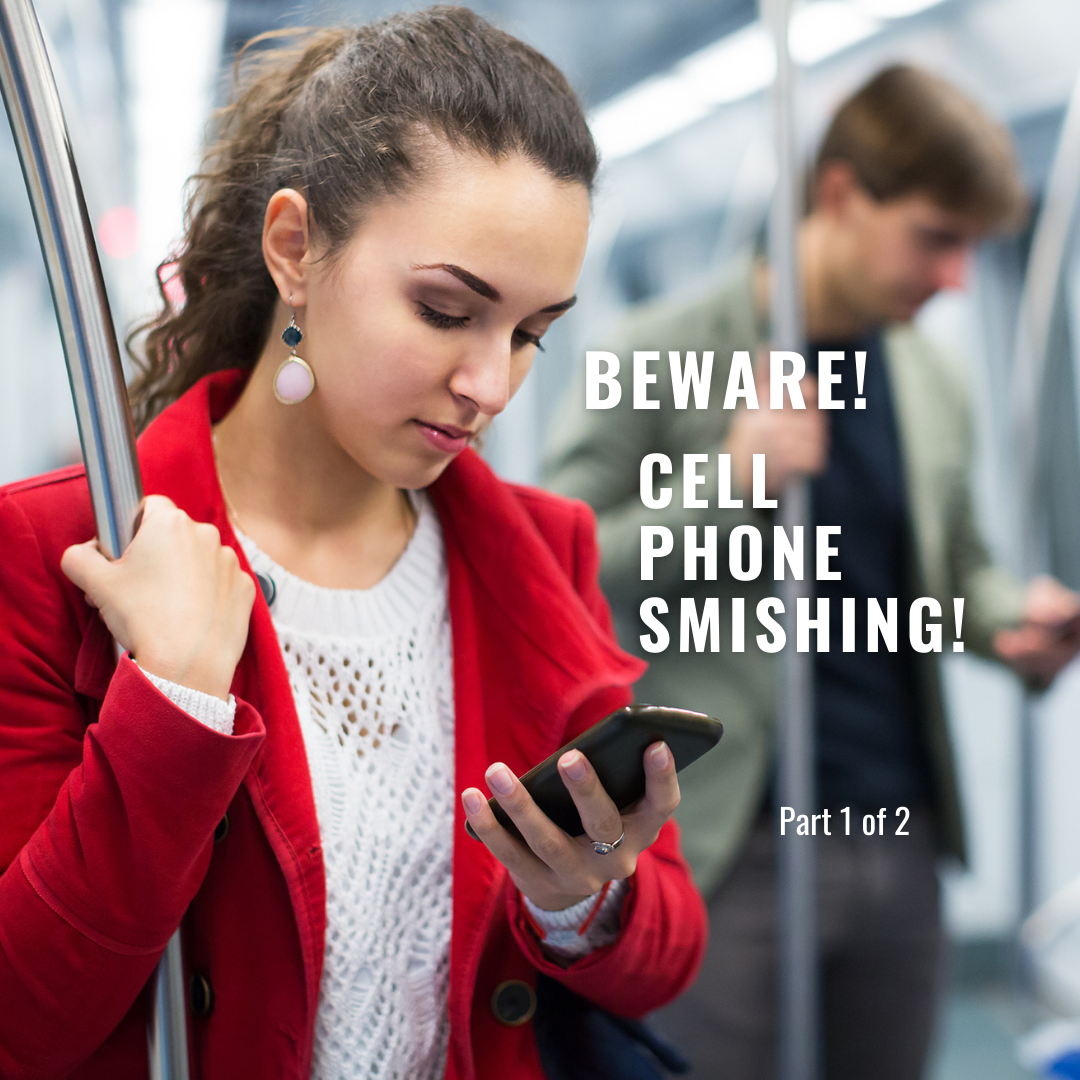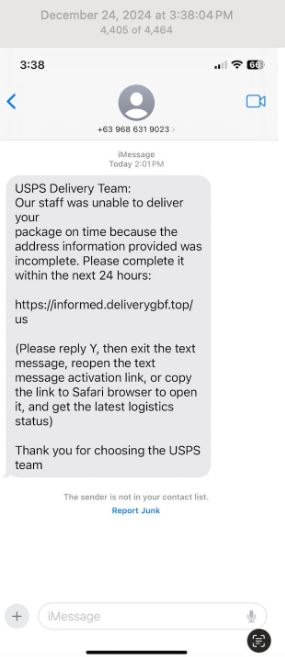
Part 1 of 2
Almost all Americans own a cell phone (98%). In 2023, 76% of those were smartphones.
Our mobile phones are increasingly becoming instruments of phishing and spam attacks via our text apps. The industry calls these “smishing” schemes.
In 2022, 19.5% of texts were reported as spam (requests to block) and they are growing at a 15% rate per year.
What to Do?
Here is one example supposedly from the US Postal Service (USPS).

Upon inspection, here are some simple observations:
Keep in mind, under no circumstance should we click on or copy and paste URLs (to our browsers) from an unknown or unwanted communication (email or text). Take your time before you click. Stop, Look and Think!
Our Advice
If you can, delete the text before you click on it (recognizing that the USPS does not send texts from the Philippines or any other countries).
If you opened the text, close it and delete it immediately. When deleting it, label it as spam or request the number to be Blocked (if your text app allows such an option).
In any case, never click on links from communications that are unsolicited.
Whatever your financial need, we’re here to help.
Posted in board-brief, ktfcu-news on Mar 19, 2025